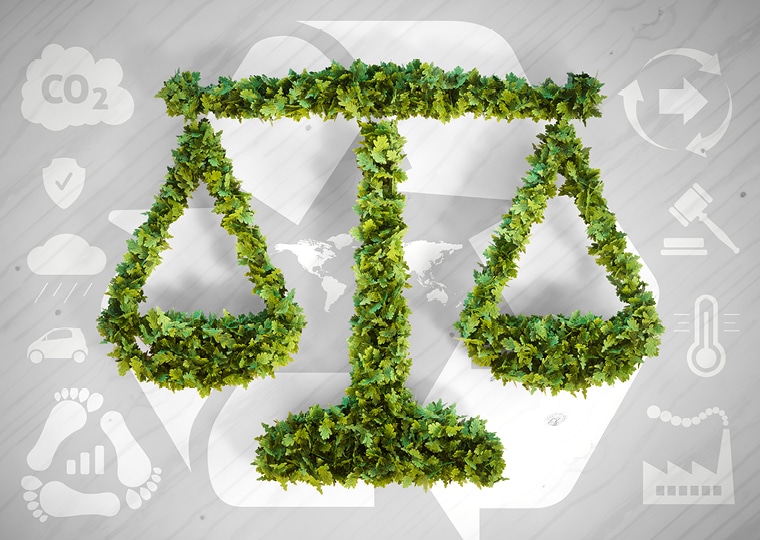As climate change continues to impact communities worldwide, STV’s resilience, landscape architecture and civil engineering teams recognize the significant role that green infrastructure and nature-based solutions can play in mitigation efforts. Green infrastructure leverages natural, often living elements like plants and soil to manage stormwater runoff, mitigate extreme heat and provide other essential ecosystem services. Examples of green infrastructure include permeable pavement, stormwater harvest and reuse systems and strategic landscaping like rain gardens.
The adoption of green infrastructure has gained momentum in recent years, largely because it delivers on the “triple bottom line”—providing environmental, economic and community benefits—by offering cost-effective, aesthetically pleasing and resilient improvements. A growing body of research underscores green infrastructure’s resilience value, particularly in managing storm and floodwater runoff and mitigating extreme heat. Additionally, well-documented guidelines from cities like Portland and Seattle offer practical steps for implementing green infrastructure, making it more accessible and manageable for various communities. Recent federal investments prioritize nature-based solutions, providing substantial funds to accelerate green infrastructure projects’ implementation across the country.
As leaders in infrastructure and environmental design, STV is committed to enhancing community resilience through innovative infrastructure solutions. Our expertise in green infrastructure, including its numerous advantages and implications for operations and maintenance, ensures we are well-equipped to help our clients integrate green infrastructure into their resilience strategy.
Green Infrastructure and Conventional Infrastructure: A Symbiotic Relationship
Green infrastructure does not replace conventional or “gray” infrastructure, but rather complements and enhances it. For instance, green infrastructure can limit stormwater flows into a city’s combined sewer system, preventing contaminated water from overflowing into streets or bodies of water. In some cases, green infrastructure can replace gray infrastructure entirely. Whether supplementing or replacing gray infrastructure, green infrastructure offers several key advantages:
- Cost-Effectiveness: A number of studies have shown that green infrastructure, when strategically deployed and properly maintained, is more cost-effective than conventional infrastructure for managing stormwater. These cost savings are achieved through both lower construction costs and reduced operations and maintenance expenses.
- Added Value: In addition to cost savings, green infrastructure offers numerous valuable functional benefits beyond managing rain and floodwaters. It can reduce extreme heat, improve air quality and sequester carbon. Some green infrastructure also provides natural habitats for wildlife and creates beautiful green spaces for socializing or aesthetic enjoyment.
- Simplicity: Green infrastructure manages stormwater simply by increasing surface areas that can absorb and retain water, effectively handling runoff with minimal intervention. While gray infrastructure relies on complex systems of gutters, drains, pipes, valves, machinery and chemicals, green infrastructure solutions like earthen berms, permeable pavements and retention ponds are inherently simple, reducing operational complexity.
- Adaptability in Tight or Busy Spaces: Green infrastructure solutions can take various forms, many of which are adaptable to small and busy spaces without disrupting existing uses. For instance, New York City’s Department of Environmental Protection (DEP) has successfully implemented green infrastructure in both right-of-way (ROW) spaces and larger public places, such as playgrounds, enhancing the city’s environment without compromising functionality.

Simple and Cost-Effective Operations and Maintenance
Maintenance for green infrastructure needs to be responsive to the natural systems involved. Unlike gray infrastructure, which often receives attention only when something goes wrong, green infrastructure requires regular, responsive care, similar to tending houseplants. In their initial years, green infrastructure systems may require more frequent maintenance as they take root, but over time, these needs taper off and staff becomes more adept at managing them. Consistent upkeep ensures green infrastructure systems operate at full capacity, providing optimal benefits and preventing the need for full replacement.
Despite the need for regular maintenance, green infrastructure’s simpler design translates to straightforward and cost-effective upkeep. Much of the work is akin to basic yard care; tasks like weeding, trimming and replacing mulch can be handled with simple tools like rakes and wheelbarrows. This reduces the need for specialized equipment and personnel—no vacuum trucks required— translating to real cost savings and making green infrastructure a more viable option for many organizations.
For organizations contracting out maintenance, conventional landscaping companies can handle most green infrastructure tasks. And in Portland, for example, even volunteers can manage simple upkeep. The city maximizes its green infrastructure investment through its Green Street Stewards program, enlisting volunteers to perform maintenance tasks like weeding and pruning, thereby promoting community involvement and significantly reducing maintenance expenditures.
Funding Opportunities and Technical Assistance for Implementing Green Infrastructure
Green infrastructure offers a robust, cost-effective and sustainable solution to the challenges posed by climate change. By integrating green infrastructure with conventional infrastructure, we can enhance resilience, beautify communities and provide a myriad of environmental benefits. As the urgency to address climate impacts grows, the adoption of green infrastructure will play a crucial role in building a sustainable and resilient future.
Significant federal investments through the Infrastructure Investment and Jobs Act (IIJA) and the Inflation Reduction Act (IRA) prioritize projects with favorable climate and community impacts, creating a timely opportunity to invest in green infrastructure solutions. The Environmental Protection Agency (EPA) provides a range of resources, including tools for cost-benefit analysis, to guide organizations through the implementation and maintenance of green infrastructure systems. STV is well-equipped to assist in evaluating the efficacy and feasibility of green infrastructure for the specific needs of an organization, providing the necessary support to facilitate successful implementation.








